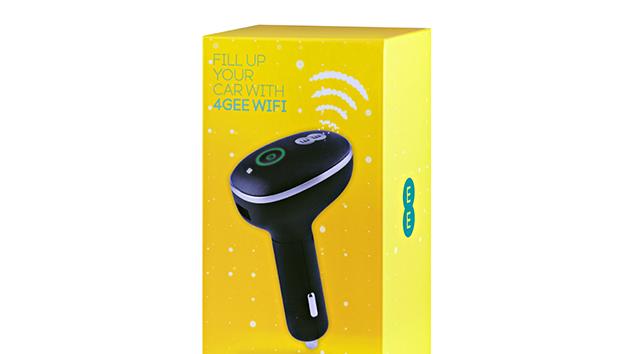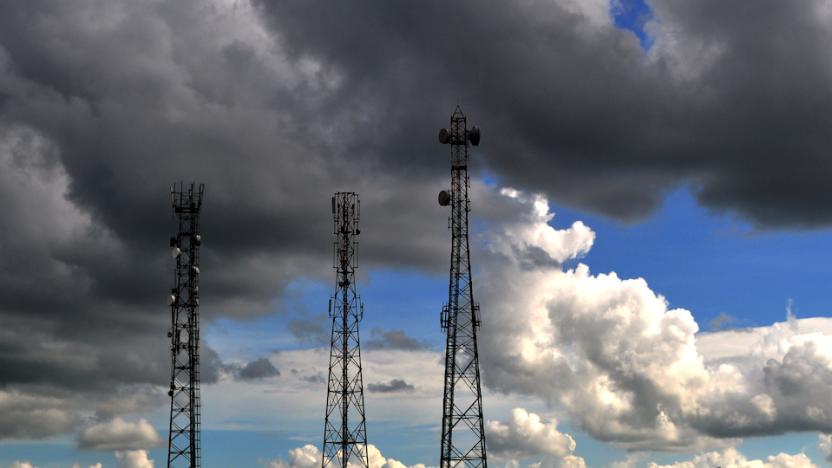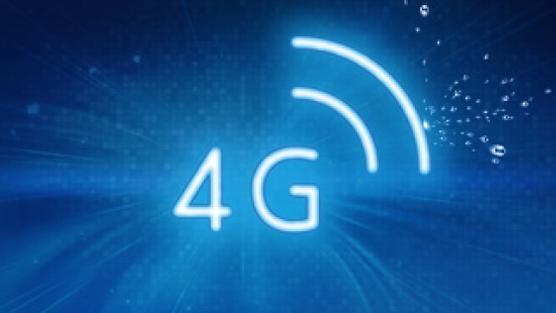4G
Latest

Vodafone extends 4G roaming to cover 40 countries
You probably take Vodafone's 4G network for granted when on home turf, only to be saddened by slower speeds when travelling further afield. Well, Vodafone wants to make sure you get full use of your phone's LTE radio while abroad, and after announcing a bunch of new countries where 4G roaming is supported a few months ago, it's added almost as many to that same list today. Of the 17 new countries that make up the now 40-strong list, Japan, Mexico and Saudi Arabia are arguably the most notable, though you can have a gander at the full roster after the break. As you may already know, Vodafone lets customers use their normal voice, text and data allowances abroad for either £3 per day in Europe, or £5 per day everywhere else. And if you're travelling to any of the newly added countries over the holiday period, consider today's news an early stocking-filler.

Three finally shares how many of its customers are using 4G
Three is a little different from the other major UK networks, because all of its contracts come with 4G coverage as standard. EE, O2 and Vodafone have dedicated LTE plans, allowing us to easily gauge the interest in its ultra-fast offerings, but for Three, where any customer can fall into a patch of 4G, it's trickier to quantify. The company has been quiet up until now, but today it's finally shared some figures: since switching on its 4G network a year ago, 3.1 million customers have benefited from the faster speeds. That means over a third of Three's 8 million subscribers have wandered into an area supported by its 4G network, which now covers 48 percent of the UK population. If you're keeping score, EE is out in front with 6 million 4G subscribers, followed by O2 with 3 million and Vodafone with 1.4 million. Although Three's numbers aren't directly comparable, they're still a useful yardstick.

EE and O2 are now serving 4G inside the Channel Tunnel
Having mobile internet access inside the Channel Tunnel is useful, but where are those faster speeds we were promised? Well, after expanding their 2G and 3G networks in March, EE and O2 are finally offering 4G connectivity on the Eurostar. Vodafone could soon get in on the action too, after the network said in January it would also be rolling out its own 4G coverage inside the tunnel (although it's yet to provide any clues as to when that will happen). Regardless, the superfast speeds from EE and O2 mark another milestone for the iconic 31.4-mile underpass, which has been jettying passengers between England and France for over 20 years. So, the next time you travel to Paris (or beyond), you might want to rethink your preferred mode of transport -- if you want to stay connected and actually get some work done, the Eurostar could be a better option than a direct flight.

EE's £79.99 'Buzzard 2' is an all-in-one 4G WiFi dongle for your car
In its bid to get more customers connecting to its 4G network while they travel, EE introduced the Buzzard, a £49.99 plug-and-play mobile hotspot designed specifically for the car. Launched in April, the device came in two separate parts, making it difficult to store and plug in during your journey. EE appears to have realised this, as today it's introducing its successor, the Buzzard 2. Like the original avian-themed dongle, the Buzzard 2 plugs into your car's dashboard and supports up to 10 WiFi connections. However, it comes with a new lighting system that makes it easier to use and can also serve as a USB charger, allowing you to charge your devices while you browse (when you're not driving, of course). EE's new hotspot is priced at £79.99 (£30 more than the original) when bought outright, but comes down to £19.99 when purchased with a £10 monthly plan, which includes 1GB of data. However, you can get it for free if you sign up for the £15 tariff, which lavishes you with 3GB of data every month. If you've got small kids intent on watching Netflix all the time, that allowance might not get you very far, but it'll do a job if you want a backup for your smartphone plan.

Ofcom's first 4G survey shows that speed isn't everything
All of Britain's major mobile networks have been offering 4G for a while now, but because all have their own infrastructure, speeds and coverage can vary wildly. Each carrier is quick to boast their own statistics, but thanks to Ofcom's first ever 4G research report (which tested networks in five of the biggest UK cities) we're finally able to separate fact from fiction. EE and O2 took first and second place in the all-important average download speed test, reaching 18.4Mbps and 15.6Mbps respectively, while Three claimed victory for the time needed to load a simple webpage. The carrier, which was originally a 3G-only operator and the last to offer its customers 4G connectivity, also took the gold medal for latency, which is crucial for video calls and apps that require fast response times.

GiffGaff customers can finally get 4G on their phone
It's taken far longer than it should, but low-cost mobile operator GiffGaff has finally joined the 4G party. The O2-owned MVNO is now offering speedier goodybags alongside its interchangeable 3G tariffs, allowing existing customers (those who joined before October 29th) to upgrade at no extra cost. That loyalty bonus means prices start at £10 per month, offering 500 minutes, unlimited texts and 1GB of data, rising to £15 per month for double the amount of minutes and the promise of 5GB of data. As expected, there's no offer of unlimited internet here. GiffGaff had previously tested 4G connectivity with some customers, but today marks the first time packages are available to all.

National roaming: why mobile operators are fighting the UK government
The concept of national roaming first appeared back in June, when Culture Secretary Sajid Javid began advocating a system that would allow UK mobiles to switch networks in places where the carrier they're supposed to be on offers no signal. The idea is to rid Britain of so-called mobile "not-spots," rural areas where populations are small and coverage is minimal, by coercing the major carriers to share their networks with each other. The government recently launched a consultation to explore ways it can achieve this goal. Operators, however, have been vociferous in their opposition to the plans. What's their excuse?

Ofcom to expand 4G in the UK with new spectrum auction next year
The UK's four main carriers may steadily be building up their 4G coverage, but regulators don't want to leave the future of Britain's superfast networks to chance. UK communications regulator Ofcom today announced that it intends to auction more 4G spectrum late next year (or early 2016), giving operators to opportunity to expand their LTE networks with more high data capacity spectrum. It expects to raise between £50 and £70 million from the sale, which will then line the pockets of the government.

Vodafone and Sky grow ever closer as Now TV becomes a new 4G perk
UK carriers are always looking for new incentives that might persuade people to switch allegiances, and Vodafone is no exception. The carrier is enhancing its 4G contracts today by adding Sky's Now TV streaming service to its existing trio of limited-time perks. New subscribers taking out a Vodafone Red 4G plan, as well as anyone buying a £30 or £40 Red 4G Freedom TopUp, can choose Now TV's Entertainment Pass as their preferred perk. To sweeten the deal, Vodafone is also throwing in a 3-month Movies Pass for free.

EE flips the switch on its faster 4G network in London
EE's been conducting closed trials of LTE-Advanced technology since last year, so imagine the red faces when Vodafone reported earlier this month that its own faster 4G network was about to go live in three cities. EE's now being forced to play catch-up, but it's well on its way today after flipping its LTE-A network live in parts of central London, including Kensington, Old Street, Shoreditch, Soho, Southbank and Westminster. This 4G+ network, as EE brands it, should cover the whole of Greater London by the middle of next year, before rolling out to other big cities like Birmingham, Liverpool and Manchester later. While standard LTE can deliver a theoretical maximum download speed of 150 Mbps, LTE-A doubles that to a maximum speed of 300 Mbps (though real-world speeds tend to be around half the max).

EE's newest 4G tablet only costs £99
When Vodafone announced its first own-brand LTE tablet, the £125 Smart Tab 4G, earlier this week, it suddenly made EE's £209 Eagle look a little pricey. Knowing that cost is key in the lead-up to Christmas, the UK's biggest carrier isn't resting on its laurels and has shot back a its rival by pricing its latest 4G tablet even lower. At £99, the vibrant Alcatel ONE TOUCH Pop 7S, is the UK's most affordable pay-as-you-go 4G slate, according to EE, and comes with a 7-inch WSVGA 1024 x 600 display, Android 4.3 (Android 4.4 KitKat available via an OTA update), a quad-core 1.2GHz Qualcomm MSM8926 processor, 1GB of RAM, 3-megapixel rear and 0.3 front facing cameras, 8GB storage (with microSD support) and a 3240 mAh battery. The operator will also throw in 100MB of free data every month with every 4G tablet bought between now and January 31st, sweetening the deal for parents or bargain hunters looking for a cheap connected tablet.

Inside Wembley: why it wants to become the world's most connected stadium
With 90,000 seats, Wembley Stadium is the largest stadium in the UK and second biggest in Europe. Demolished in 2003, rebuilt and then re-opened in 2007, the £798 million arena has played home to domestic and European cup finals in various sports, England football qualifiers and numerous open air concerts. Its owners, the Football Association (FA), have strived to "deliver the best experience possible," and for a time, that mainly involved providing hospitality to various types of visitors at the stadium. However, as smartphone use has boomed, visitor needs have changed, and the stadium has been forced to evolve to match their requirements. That isn't to say its owners have resisted change, as we found out when we visited the sporting amphitheatre earlier this week.

EE updates its SIM-only plans with some cheaper options
It's been a busy month for EE already, with updated pay-as-you-go tariffs and a break-up with Phones4u that's forced the latter to shut-up shop. The bustle continues, however, and today the 4G network's announced revamped SIM-only plans for those who don't need no subsidized handset. On a one-year contract, pricing starts at £10 per month for 250MB of data and goes all the way to £28 per month for 10GB. Committing to only a 30-day plan makes it all a little more expensive at £13 for 250MB and £31 for 10 gigs. The top three data allowances of 2GB, 5GB and 10GB also get access to EE's "double-speed" network, as well as free calls to 080 numbers. They are only transient deals, though, and for new customers those caps will be reduced to 1GB, 3GB and 5GB, respectively, come the end of January next year. We know how much you love tables, so there's a handy one after the break that lays out all the new plans and their prices.

With Qualcomm's Snapdragon 210, even the cheapest smartphones will get LTE
While Qualcomm's dominating the premium and mid-range smartphone space, MediaTek's been taking care of the other end of the spectrum until it launched its premium LTE octa-core chipset recently. In China alone, 40 percent of the smartphones shipped in 2014 Q3 are powered by MediaTek, versus 27 percent by Qualcomm, according to IDC (NVIDIA and Intel each had less than one percent share). Of course, emerging markets are where the money's at these days, so it's no surprise that Qualcomm's striking back by offering an LTE-enabled SoC, the Snapdragon 210, for the entry-level market. Better yet, Co-president Cristiano Amon told us in Hong Kong that Qualcomm's specifically aiming at the off-contract sub-$100 smartphones.

Vodafone catches up to the crowd with 4G on pay-as-you-go
Coming up to a year since Vodafone switched on its 4G network, the carrier's finally opened those superfast airwaves up to pay-as-you-go customers today. If you already own a compatible handset, all you need is a £20 "Freedom Freebee" top-up -- which grants you 2GB of data, 500 minutes and unlimited texts -- to start enjoying LTE speeds (anything cheaper and you're stuck on 3G). Higher top-ups of £30 and £40 get you 4GB and 6GB respectively, as well as unlimited calls and either Spotify Premium or Sky Sports streaming access. You're probably best springing for the £20 option initially, though, as your welcome bonus to 4G PAYG is unlimited data for the first month. If data is all you're after, PAYG mobile broadband customers can now also access 4G at a minimum cost of £15 for 2GB.

EE expands 4G roaming to 14 more countries, but the USA's still MIA
EE has today announced a fresh batch of countries its customers can take advantage of 4G roaming in, after starting out in France and Spain earlier this year. It's a diverse list, with 4G now available in several other European destinations (Germany, Italy, Portugal, the Netherlands, Norway, Poland, Luxembourg, Switzerland, Moldova, Russia), as well as Canada, Saudi Arabia, the United Arab Emirates and from tomorrow, South Korea. The USA is the only country absent from the list that EE said would be added by summer, but the network is promising to reach "all major travel destinations" by year's end. While the carrier might be making progress towards this goal, it's still using the tiresome model of selling capped data bundles to travellers. O2 and Vodafone, on the other hand, let you take your normal allowances abroad for a small fee, and Three being Three, provides the same service for free.

Vodafone's Smart 4 power: too expensive for an own-brand 4G phone
4G is now a mainstream technology in the UK, meaning network operators can chase more frugal consumers with low-cost, own-brand handsets. It's unlikely O2 and Three will get involved in this race to the bottom; they simply don't have the experience EE (through its sub-brands Orange and T-Mobile) and Vodafone do in self-made handsets. EE was the first to make a move with the £99 Kestrel, and Vodafone recently launched its rebuttal: a pair of smartphones in the Smart 4 turbo and Smart 4 power. I've already commented on their price tags (£135 and £175, respectively), which are high enough to make you wince considering their competition. And, after spending a little quality time with the higher-end Smart 4 power, I can't say I feel any different.

Vodafone's first own-brand 4G phones could struggle to compete
Last year we would've bet our lunch money on Vodafone being the first UK carrier to release an own-brand LTE smartphone. After all, we spotted a "Vodafone Smart 4G" picking up its roaming permit from the US communications regulator, and only a few weeks after the carrier switched on its UK LTE network. Alas, the phone was destined for other European countries and EE pipped Vodafone to the post with the launch of the 4G-friendly Kestrel. Vodafone's finally caught up, however, releasing a pair of LTE handsets under its own name: the Smart 4 power and Smart 4 turbo (left and right in the image above, respectively). The turbo is the inferior of the two, with a 1.2GHz quad-core processor and 4.5-inch 854 x 480 display, while the power is outfitted with a 1.3GHz quad-core Mediatek processor and 5-inch 960 x 540 screen. Otherwise, both have 1GB of RAM, unspecified amounts of on-board storage (with microSD support), 5-megapixel main shooters, front-facing cameras, and run Android 4.4 KitKat.

OnStar's in-car 4G LTE: fast on the highway, but still needs a tune-up
From a public relations perspective, it was a good plan: round up a handful of journalists, cram them in 4G LTE connected cars, and showcase OnStar's new network by using it to host teleconference interviews from the beach. A good plan, but one still subject to the follies of network connectivity. After spending several hours connected to GM's "Connected by OnStar 4G LTE" fleet of 2015 sedans, I can unequivocally say it's the best LTE experience I've ever had at 70 miles per hour -- but it's far from perfect.

O2's discounted SIM-only plans offer 4G from £11 per month
It's become a race to the bottom over who can provide the cheapest 4G tariffs. Today, O2 altered its one-year SIM-only plans, which now means its 4G tariff of 500MB of data, 500 minutes and unlimited texts costs just £11 a month. Jumping up to 3GB, 6GB or 8GB of data (with unlimited minutes and texts) will set you back £20, £25 and £30 per month, respectively. In comparison, the monthly damage on similar EE plans for 1GB, 2GB and 4GB are £17, £20 and £23 respectively.




